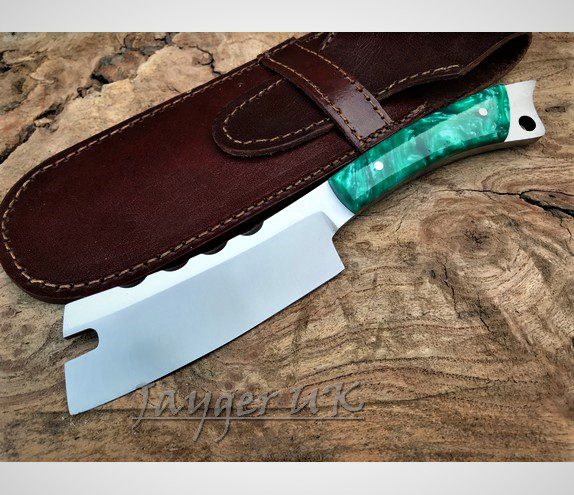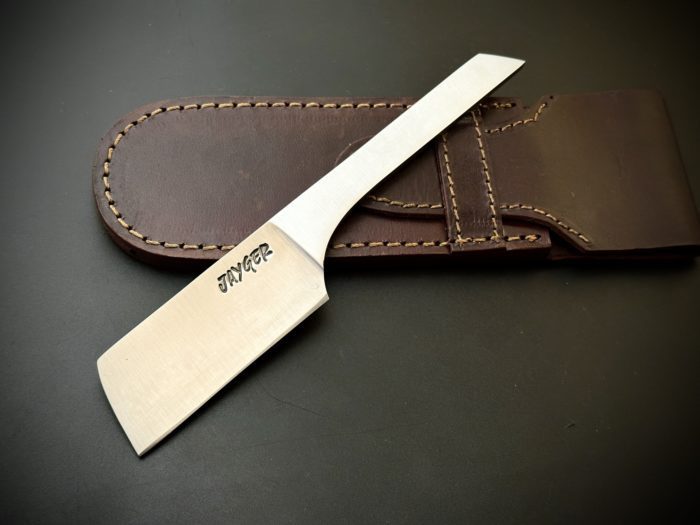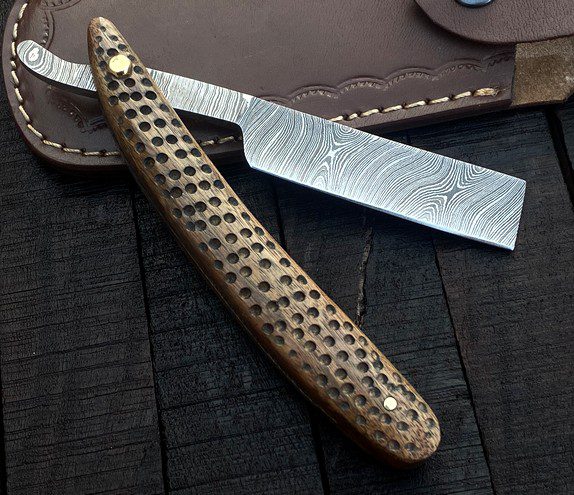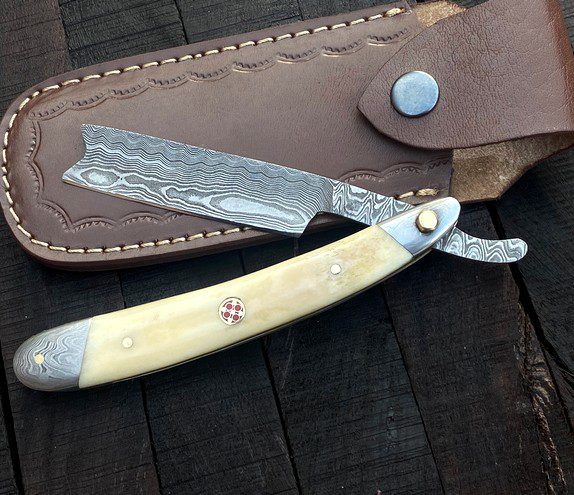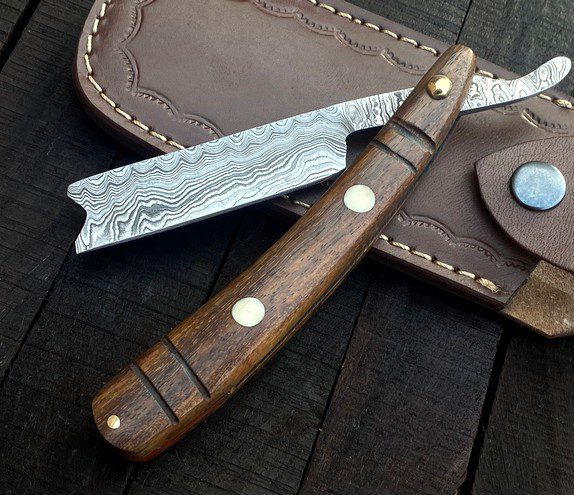Your Perfect Straight Razor: The Ultimate Buyer’s Guide

Are you tired of using disposable razors that just don’t cut it? You may be looking for a more traditional and luxurious shaving techniques. If so, a straight razor might be just what you need. But with so many options on the market, how do you choose the perfect one? Look no further than this ultimate buyer’s guide for your perfect straight razor.
We’ll cover everything you need to know, from the different types of blades and handles to the materials and maintenance. Plus, we’ll give you tips on how to use a straight razor safely and effectively. Whether you’re a seasoned pro or a newbie to the Kamisori straight razor game, this guide has everything you need to make an informed purchase and achieve the perfect shave every time. So sit back, relax, and let us guide you to your perfect straight razor.
The history of kamisori straight razor, rooted in Japanese culture, has a rich history dating back centuries. Originating in the 17th century, it was traditionally crafted by skilled artisans known as “kamisori-shi.” This single-edge razor became iconic, symbolizing Japanese craftsmanship and precision shaving techniques. Today, it continues to be cherished by shaving enthusiasts worldwide.
Factors to Consider When Choosing a Straight Razor
When choosing a straight razor, there are several factors to consider:
- Consider the blade material. Damascus steel blades are known for their sharpness and durability, while stainless steel blades are more resistant to rust and corrosion.
- Consider the blade size and shape. A larger blade may be better for those with larger hands, while a smaller blade may be more maneuverable.
- Consider the handle material, design, and features like finger rest or grip texture.
Blade size and weight
One of the first things to consider when choosing a straight razor is the blade size and weight. The blade size typically ranges from 4/8 to 8/8 inches, with the most common sizes being 5/8, 6/8, and 7/8 inches. The larger the blade, the more surface area it covers, making it easier to shave larger areas like the cheeks and neck. However, a larger blade may be more cumbersome for precise shaving around the mustache and beard areas.
The weight of the razor is also an important factor to consider. A heavier razor will require less pressure and effort to shave, but it may also be more difficult to maneuver around tight areas. A lighter razor may offer more control and precision but require more pressure to shave effectively. Ultimately, the choice between blade size and weight comes down to personal preference and the type of shaving experience you want.
When choosing a Kamisori straight razor, it’s important to consider the balance between the blade and the handle. A well-balanced razor will feel comfortable in your hand, making shaving a more enjoyable experience. Additionally, it’s important to choose a razor with a comfortable grip that won’t slip during use. Handles are typically made from wood, plastic, or metal, with each material offering its unique advantages and disadvantages.
Blade grind and edge
The blade grind and edge are other important factors when choosing a straight razor. The grind refers to the shape of the blade’s cross-section, with the most common grinds being hollow, quarter-hollow, and full wedge. A hollow grind is the thinnest and lightest, making it ideal for precision shaving around tight areas. A full wedge grind is the thickest and heaviest, making it ideal for shaving larger areas. The quarter-hollow grind is a good balance between the two.
The blade edge is also an important consideration. The two most common edge types are the straight edge and the serrated edge. A straight edge is the most common, providing a clean and smooth shave. A serrated edge, also known as a “sawback” edge, is less common and provides a more aggressive shave ideal for thicker beards.
Lastly, the sharpness of the blade is also an important factor to consider. A sharp blade provides a clean and smooth shave, while a dull blade pulls and tugs at the hair and skin. It’s important to regularly sharpen and hone your straight razor to maintain its sharpness and effectiveness.
Different Types of Straight Razors Explained
There are several types of straight razors to choose from, each with its unique features and benefits.
Kamisori razors are Japanese-style razors with curved blade and a single bevel edge. They are known for their precision and sharpness.
Classic barber’s razor has a straight blade and a rounded tip, and the shavette uses disposable blades instead of a traditional straight razor blade.
It’s important to consider your preferences and needs when choosing the right type of straight razor.
Understanding Blade Materials: Which One is Best?
When choosing the perfect straight razor, the blade material is an important factor to consider. The most common materials used for straight razor blades are stainless steel, carbon steel, and Damascus steel. Stainless steel is durable and resistant to rust but may not hold an edge as well as other materials. Carbon steel is known for its sharpness and edge retention but requires more maintenance to prevent rust. Damascus steel is a high-end option, known for its unique pattern and excellent performance, but it comes with a higher price tag. Ultimately, the best blade material for you depends on your preferences and needs.
Handle Options: Finding the Perfect Grip
The handle of a straight razor is just as important as the blade itself. It should provide a comfortable and secure grip to ensure a smooth and safe shaving experience. Handles can be made from various materials, including wood, plastic, and metal.
Wooden handles are popular for their natural feel and aesthetic appeal but may require more maintenance to prevent warping or cracking. Plastic handles are lightweight and easy to clean but may offer a different level of grip than other materials.
Metal handles, such as those made from stainless steel or brass, are durable and provide a solid grip but may be heavier than other options. Consider your preferences and needs when choosing the perfect handle for your straight razor.
Our Most Selling Straight Razors
-
Handmade Straight Razor Kamisori Style – XC5
Original price was: £110.00.£90.00Current price is: £90.00. -
Custom Made Straight Razor Kamisori Style – SK5
Original price was: £60.00.£44.99Current price is: £44.99. -
Damascus Steel Straight Razor Kamisori Style – SK6
Original price was: £60.00.£49.99Current price is: £49.99. -
Handmade Straight Razor Cut throat Damascus Steel – RD1
Original price was: £59.99.£49.99Current price is: £49.99. -
Damascus Cut throat Straight Razor Leather Cover – RD2
Original price was: £69.99.£49.99Current price is: £49.99. -
Handmade Damascus Steel Folding Straight Razor – RD4
Original price was: £59.98.£49.98Current price is: £49.98.
Expert Tips for Testing and Evaluating Straight Razors
Testing and evaluating different options is key when finding the perfect straight razor. Look for razors with a sharp and even blade and a comfortable handle that fits your grip. Consider the weight and balance of the razor and any additional features like a replaceable blade or adjustable tension. Feel free to try different brands and styles to find the best one. And remember, proper maintenance and sharpening techniques are essential for keeping your straight razor in top condition for years to come.
Straight Razor Accessories
Lastly, several accessories can enhance your straight razor shaving experience and help you maintain your razor. A leather Strop or canvas strip used to sharpen and hone your razor. Using a strop regularly can help maintain the sharpness of your blade and extend its lifespan.
A shaving brush is another useful accessory that can help create a rich lather and exfoliate the skin. Choosing a brush made from high-quality materials is important so it won’t shed or irritate the skin.
Other accessories to consider include a shaving bowl, which can help create and mix shaving cream, and a travel case, which can help protect your razor while on the go.
In conclusion, choosing the perfect straight razor requires careful consideration of several factors, including blade size and weight, blade grind and edge, maintenance and care, and accessories. By taking the time to research and explore your options, you can find the perfect razor to meet your unique needs and provide a luxurious and enjoyable shaving experience.
With proper care and maintenance, your straight razor can last a lifetime and provide a smooth and effective shave every time.
Maintenance and Care Tips
Proper maintenance and care are essential for keeping your straight razor in top condition and ensuring a long lifespan. One of the most important things you can do is to keep your razor dry and clean after each use. This will prevent rust and other forms of damage. Oiling your razor regularly is also recommended to prevent rust and maintain its sharpness.
Another important aspect of maintenance is sharpen a straight razor. This should be done regularly to ensure your razor is always sharp and effective. You can either do this using a sharpening stone or take it to a professional.
It’s important to keep your razor in a dry and cool place when storing it. Avoid storing it in a bathroom or other humid environment, as this can promote rust and other damage. Additionally, it’s important to keep your razor out of reach of children and pets.

